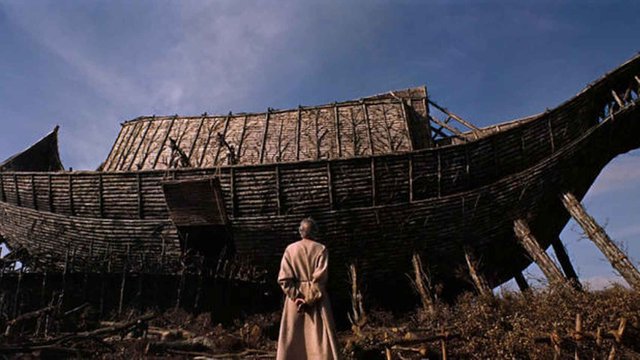Local Emergency Committees (CLOE)

Fuente
Noah's Ark Project
As part of our environmental contributions, from the groups to which we belong, we made the decision to educate and help organize the Local Emergency Committees in the communities so that they can develop the Integral Disaster Attention, from their own spheres. The Integral Attention of Disasters, confers us the Security of the Community.
We call this work "Noah's Ark Project", a Program in honor of the story referred to in the Bible, as it is one of the oldest stories of a Contingency Plan, it is appropriate to take its name.
Project References
In terms of environmental management and as a worldwide interest, the topic of Comprehensive Disaster Management has been increasingly taken into consideration. Let's move forward.
The United Nations determined that the ten years since 1990 should be decreed as the "International Decade for Natural Disaster Reduction" (IDNDR). Based on this strategy, a platform was created to deal with this issue called "International Strategy for Disaster Reduction" (ISDR), a reference for the Integral Attention to Disasters.
The United Nations Environment Program Office (UNEP) has assumed this issue as important in environmental management and has developed a program to guide the Comprehensive Disaster Management, called "Awareness, Preparedness for Emergencies at the Local Level" (APELL). From this strategy we can take it as a reference in the attention from our community, to develop the Integral Attention of Disasters.
Local Emergency Committee
A Local Emergency Committee (CLOE) is a form of organization of a community that is in charge of the integral attention of its "Security" and the "Integral Attention of Disasters" in its locality, its parish, its municipality, State and country. Security is seen as: to remain with integrity of life and health of people, integrity of goods, social infrastructure and services of a community. The Integral Attention to Disasters is when Disasters are attended to before they occur (pre-patent period), during their development (patent period) and after their occurrence (post-patent or consequential).
Community
In different definitions, it is said that the Community is a homogeneous or heterogeneous set of people, organized or not, who live together or do activities in an area, obeying rules and having common interests.
The fundamental basis for the development of a Communal Council or a Local Committee of Supply and Production (CLAP) in Venezuela is the family, so it can be said that the Community is a group of families that occupy a space in our country, which also share an infrastructure, public services, neighborhood coexistence and share common interests and are organized to develop this coexistence.
CLOE Membership
When a CLOE is developed, each and every member of the community, every family, is a member of its Local Emergency Committee (CLOE).
How to organize the CLOE
In each Community with or without a Community Council, the Spokesperson of the Local Emergency Committee and its Collaborators can be chosen by vote. This Coordinating Team is in charge of making the Committee possible and that it assumes its functions, which among others are:
1.- Organize Team to assume the CLOE Spokesperson or Coordination.
2.- Exercise the Planning, Organization, Execution and Control of the Integral Care of Disasters in its three moments (Pre-patent, Patent and Post-patent).
3.- Create an Education Strategy for Integral Disaster Attention for the CLOE's Spokesperson or Coordination and for all families and individuals in the Community.
4.- Hold diagnostic meetings on the threats of the region, municipality, parish, community, street or avenue.
5.- Elaborate proposals of Integral Attention for each threat (Contingency Plan).
6.- Report Disasters of any magnitude in the Community, identify the risk factors of each hazard and make mitigation proposals for each one.
7.- Establish organic and functional links with Public Agencies, Police Agencies and the National Armed Forces, Service Organizations and Companies, Health Care, Disaster Attention.
8.- Create a Telephone Directory of Families and Community Members, Public Organizations, Police and National Armed Forces, Organizations and Companies that provide Services, Health Care and Disaster Attention.
9.- Schedule Drills with Families and Community Members, Public Agencies, Police Agencies and the National Armed Forces, Service Organizations and Companies, Health Care, Disaster Attention.
10.- Directory of people in the Community with skills, trades and professions.
11.- List the different high and low spaces of the community, spaces that serve as access to the community (for terrestrial, aquatic and aerial access).
12.- Make a list with their location and identification of poles and towers of the electric service, public lighting, telephony, Internet cable television services, distribution tanks, valves and flow path and direction of the aqueduct, tanquillas, flow path (sewers) and flow direction of the sewage service. Determination of the surface runoff basin, location and route of drainage systems and gullies (streams), their direction of flow and systems of which they are receivers and tributaries.
13.- Acquire Logistics for Integral Disaster Attention.
14.- Lead the Community to develop the Contingency Plan of the Patent phase and the actions of the Post Patent phase, in case of a disaster.
This type of education and organisation is very good, especially for all the people who do not know and are not prepared for disasters, many times they do not know what to do in such a moment. I think that this should be extended to all communities, especially those that are very close to riverbeds.
You've got a free upvote from witness fuli.
Peace & Love!